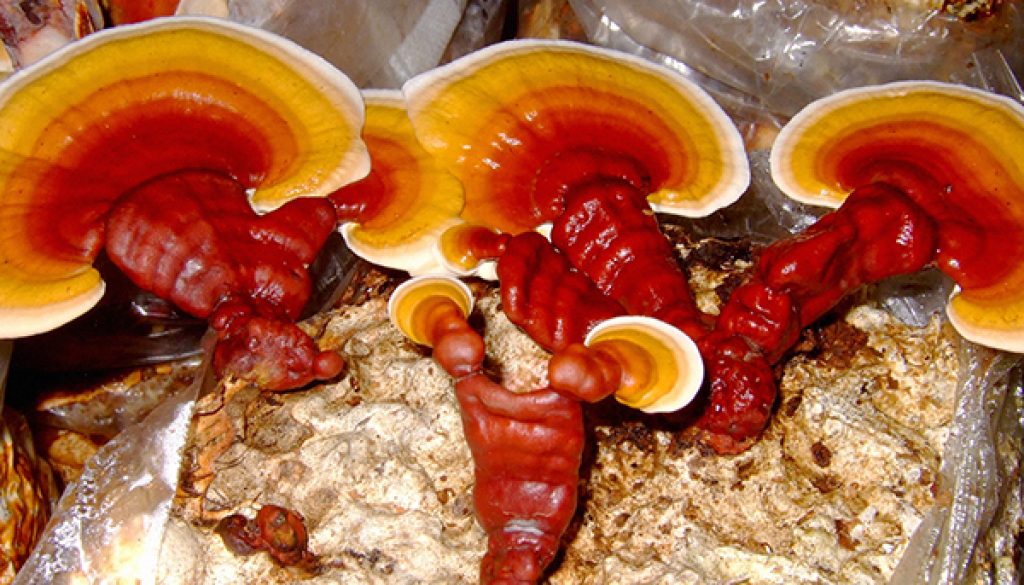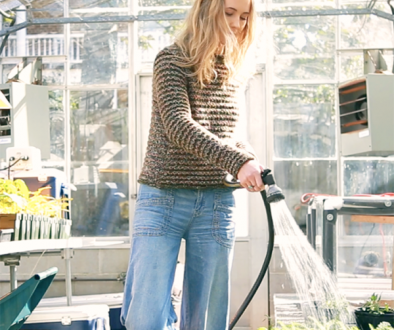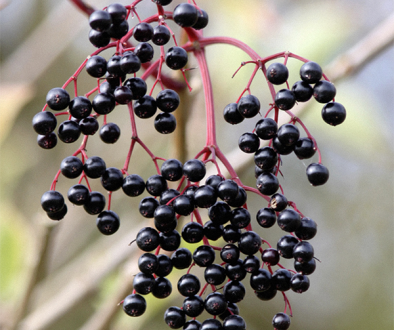Healing the Earth and Ourselves with Reishi Mushrooms
By Madeline Kiser
Fungi are guardians of the forest and the attendants of future generations, as they are found everywhere. Mushrooms have been in alliance with nature for millions of years. By partnering with fungi, humans can also resist disease. Humans and the environment both have weakened immune systems due to stress, industrialization, and disease. Many researchers are studying how mushrooms can inevitably save the world by filtering water, supporting trees to grow in forests, encouraging plants to grow in gardens, and controlling insect pests. Considering climate change and its detrimental social, environmental, cultural, and economical impacts, nature needs our help in order to mitigate and adapt to these effects. According to Paul Stamets in Mycelium Running, nature can typically heal itself with fungi. However, since humans have accelerated the natural destruction and renewal cycles of forests, we should also help accelerate decomposition cycles through mycelium mats, which are a mass of branching filaments called hyphae that sometimes produce mushrooms, the fruiting bodies. While positively influencing the health of ecosystems through mycoremediation, we can also consume medicinal mushrooms that have profound effects on our own health.
Reishi, or Ling Zhi, is deemed the mushroom of immortality, the tree of life mushroom, or the divine mushroom. The earliest mention of Ling Zhi occurred in the era of the first emperor of China, Shih-huang, of the Ch’in Dynasty (221-207 B.C.E) (Stamets, 2012). Ling Zhi is one of the most respected medicinal mushrooms in Asia. The Chinese believed that reishi could bring the dead back to life (Stamets, 2012). This species grows on a variety of hardwoods such as oaks, elms, beech, birch, alder, and maple. It acts as an opportunistic infection that invades a host tree when stressed or diseased, thus bringing the dead back to life. The many different varieties of reishi can address issues specific to the regions that they grow in. This mushroom is attentively studied medicinally; however, its mycoremediation properties have not been as intimately deliberated upon. We can use reishi to repair or restore the weakened immune systems of humans and environments. Habitats destroyed by human activity or natural disaster can be supported and improved by reishi because reishi is saprophytic, by growing on dead remains, or even parasitic, by killing its host.
While these mushrooms are prepared as teas, infusions, capsules, and tinctures to rejuvenate the human body, they can be also be used to rejuvenate soil, our ecological currency. Research has suggested that reishi has beneficial mycofiltration properties that are known to digest or block pathogens, such as Aspergillus niger or Escherichia coli, and eliminate chemical dyes (Mahan, 2015). Their mycelium networks can be used to filter out these pathogens or chemicals by facilitating water quality improvements in engineered ecosystems (Stamets, 2015). Just as reishi can filter pathogens and chemicals in ecosystems, this species serves as an adaptogen that helps our bodies filter pathogens and chemicals to adjust to the environment that we are in. It is a super antioxidant and an anti-inflammatory heart and liver protective tonic. Through mycology, we can use certain species of fungi to help the health of the body and the earth to adapt to stress and to stabilize.
The best way to get started with obtaining the benefits of reishi is to grow reishi indoors or outdoors through:
- Indoor reishi fruiting kits
- These are a great way to begin your knowledge of mushroom growing!
- Many fruiting kits can be purchased online, such as from Mushroom Mountain
- A reishi fruiting kit generally includes a block of sterilized sawdust and wood chips (the most common substrate). These grow kits are packed with a growing medium that is inoculated with mushroom spawn. Most grow kits only require a few simple steps and minimal maintenance.
- Generally, you are required to soak the kit in water, scrape back some of the mycelium, and keep the block moist and near indirect light.
- Your mushrooms will fruit in 14-21 days, and most growing kits allow 4-5 fruitings.
- If you start growing mushrooms without a kit, the type of mushroom you choose to grow determines the substrate you grow the mushrooms on. It is vital to research each mushroom’s needs before growing.
- Growing reishi on logs outdoors
- Select healthy wood from trees, such as oaks and plum.
- Log length should be 36-40”, with a diameter around 5-8”.
- Drill the logs with holes, inoculate them with sawdust or plug spawn, and then seal the holes with wax.
- After inoculation, incubate the logs in a humid and warm environment of over 60 degrees for 6 months.
- Common ways to consume reishi is by tea or tincture. You can purchase reishi tea bags or tinctures, or make them yourself.
Reishi Tea:
- Take 1-2 large reishi slices and put them in about a quart of water on the stove. This mushroom is corky and bitter tasting. If preferred, add a little bit of ginger and raw honey to improve the taste.
- Let the water boil for at least 15 minutes.
- You can let the water boil for a very long time, just make sure to add more water as it evaporates off.
- Strain the reishi slices and drink your tea when it’s cool!
Reishi Tincture:
You need to extract reishi in two different ways. Traditionally, this is an alcohol extraction and a hot water extraction.
- Fill a quart mason jar with broken or ground reishi.
- Pour 2-3 cups of the highest proof alcohol that you have (whiskey or vodka is fine) over the reishi mushroom and set it somewhere out of the way.
- Let the reishi and alcohol sit for at least two weeks. Shake it and give it love energy everyday.
- Strain out your tincture and set the alcohol aside– Do not throw this out, it is your tincture.
- Put the reishi mark (that’s what you have left over from the alcohol extraction) into a pot of water and boil it. It’s like making a tea, but you want the water to evaporate off this time. I start with about a quart of water and boil it down to about a cup but it can be up to 2 cups of water.
- Strain the water into the jar that you want your tincture to stay in. Then, compost the reishi mushroom. Don’t forget to say thank you to your spent herb!
- When your reishi water is cool, slowly pour the reishi alcohol that you made into the water.
Works Cited:
Mahan, J. (2015, June 15). Medicinal Mushrooms. Retrieved February 4, 2018
Stamets, P. (2015, March 20). Mycofiltration Enters the Commons . Retrieved January 10th, 2018.
Stamets, P. (2005). Mycelium Running: How Mushrooms Can Help Save the World. Berkeley, CA: Ten Speed Press, 2005. Print.



